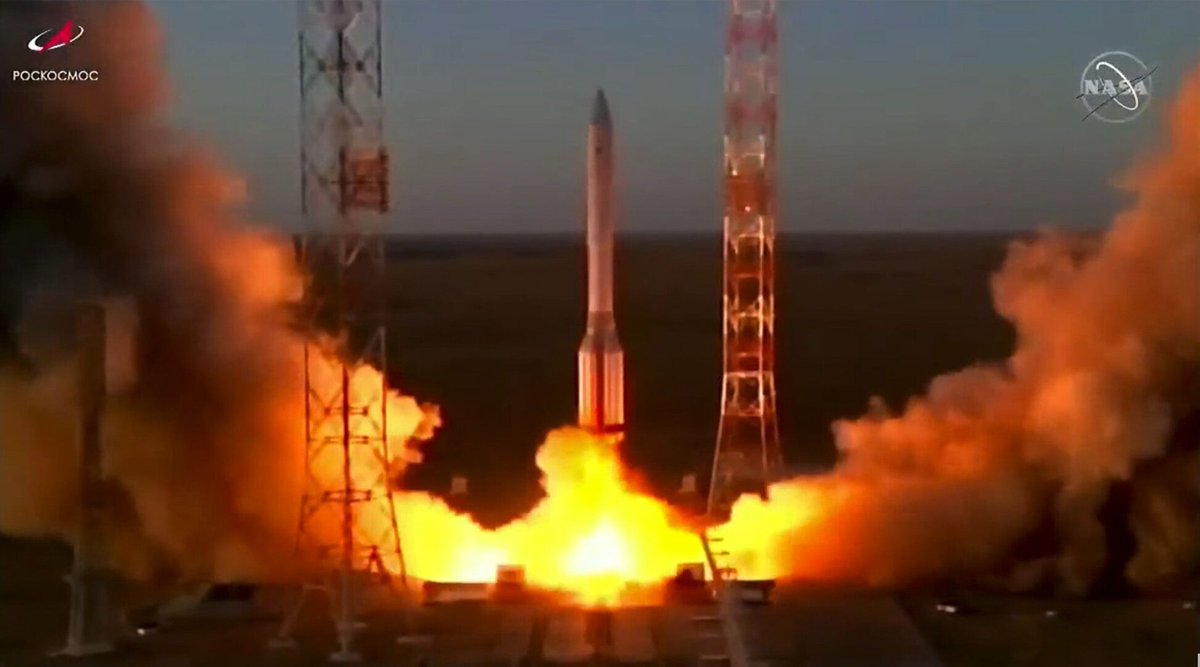The robotic arms of the ISS are some of its most useful tools. The arms, designed by Canadian and Japanese space agencies, have been instrumental in ferrying around astronauts and shepherding modules to one side of the ISS. However, the Russian segment lacked its own robotic arm – until a new one designed by ESA was launched last week.
The European Robotic Arm (ERA) will arrive at the ISS on July 29th along with Nauka, the Laboratory Module it is attached to the outside of. With the help of 5 expected space walks, the arm will soon be commissioned and will start on its first tasks – getting Nauka’s airlock up and running so it can become a permanent part of the station, and installing a large radiator to help handle the increased cooling load of the station.

Credit – ESA
As part of those projects, ERA will get to show off its skills. Those include acting like an inchworm, moving hand over hand around the Nauka module. In addition, it is the first arm to be controllable from either inside or outside the station, and that control will allow astronauts and cosmonauts to move up to 8000 kg within 5mm of a desired location.
In fact, that level of accuracy doesn’t even need to be manually controlled – the ERA is autonomous and can run strictly off written step-by-step commands. Its seven degrees of freedom and 9.7 meter reach allow it to access even outside its home module. Made of carbon fiber and aluminum, it is also strong enough to handle the wear and tear of space, and hopefully the impacts of debris that have affected other arms.
Such impressive specifications took a lot of effort – 14 years of development from 22 companies spread over seven European countries. But it is part of a larger push to translate the ISS into a more commercially friendly space, with additional research bays, upgraded data links, and external research platforms.
ESA’s plan is to make the ISS relevant at it’s “mid-life” with the Columbus 2023 program to perform novel experiments and tests on the station that would be impossible Earth-side. The ERA is certainly a step in that direction, and the upgrades it will enable should make the ISS an increasingly important place to do research.
Learn More:
ESA – European Robotic Arm is launched into space
ESA – ERA Brochure
Space.com – Europe will launch a new two-handed robotic arm to the International Space Station soon
Airbus – Airbus-built European Robotic Arm ready for Space
Lead Image:
Launch of the ERA on a Proton rocket on July 21, 2021.
Credit – Roscosmos

